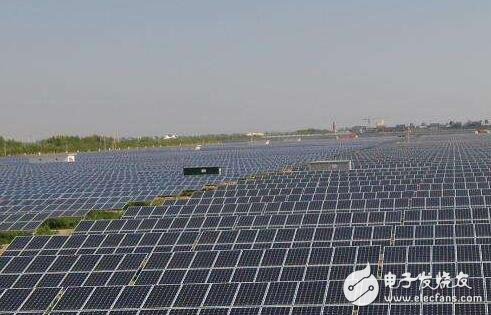In ancient times, the marching wars focused on "the weather, the location, the people," and these three are crucial to the outcome of the event. As a natural condition, the individual is powerless to change. Since he is unable to change, he will honestly follow it. This principle is equally applicable in the process of building photovoltaic power plants in rural areas.
In recent years, photovoltaic power stations have appeared in rural areas in various forms, such as complementary farming, rural poverty alleviation power stations, complementary fishing and light, and complementary forests. In general, some photovoltaic power plants are built on greenhouses, and some power stations are built in rural areas. The swamps, tidal flats, wasteland, and power stations are built in rural rivers and amber. The construction environment is complex and diverse. For a power station with scientific design and reasonable sustainable income, natural conditions are the main considerations before design.

In view of the complexity of the construction targets of photovoltaic power plants, it is necessary to consider the four factors of local solar radiation, address conditions, city conditions and meteorological conditions.
First, consider the local solar radiation is the guarantee of the photovoltaic power plant revenuePhotovoltaic power plants, as the name implies, cannot be separated from the light. If there is not enough light to build a power station, it will not be worth the candle. Before the construction of the power station, the local distribution of solar energy resources should be fully considered. The photovoltaic power station should be built in an area with sufficient sunshine. When designing, you can refer to the standard of solar energy resource division in China. Generally, more than three types of areas can be built.
Second, geological factors are one of the important considerations in site selection.The advantages and disadvantages of geological conditions directly affect the initial investment quota of the power station. If the photovoltaic power station is built in an area with bad address conditions, the safety problem of the power station will become one of the hidden dangers. Maybe when the pre-investment of the power station is destroyed because of the geological changes Once.
Geological factors We must consider these points. First, the location of photovoltaic power plants should be built in areas where the basic seismic intensity is below 9 degrees. For the construction of stations above 9 degrees, seismic safety assessment should be carried out. The seismic standard can refer to GB18306-2001 "China Earthquake Parameter Zoning Map" and GB18306-2001 "China Earthquake Peak Acceleration Zoning Map".
Secondly, when the power station is sited, it is necessary to avoid the geological disaster-prone area. The rural construction photovoltaic power station is different for land use and other projects. The relevant departments have clearly issued a document, which clearly indicates the photovoltaic power generation land, and can use Gobi, desert, and grassland. If the unused land is used in beaches, river beaches, etc., it cannot occupy agricultural land. Then the problem is coming. The geological factors in these places are complex, and there may be potential risks such as dangerous rock, mudslides and landslides. Therefore, these factors should be considered in advance, comprehensive evaluation should be made, and preventive measures should be taken early for potential risks.
Third, the terrain conditionsThe location of the PV power plant should be in a flat area or a slope in the north, south and south. The construction of the Slope Roof Photovoltaic Power Station should be oriented south or near the south, and should avoid the obstruction of the battery components by the surrounding obstacles.
For the fishing and light complementary project, the flood control standard should be higher than the ordinary, but also take into account the impact of wind, waves and tides, and it is necessary to increase the current wave height of 50 years. When building a station in a guilt-based area, the elevation of the top of the flood control embankment should be designed according to the water level in the 50-year design. If there is a drainage facility, the safety water level of 0.5 m is added according to the designed water level. In addition, for mountain photovoltaic power plants, measures to prevent floods and torrents should be considered. In the summer of 2016, because of the more rain, the system company ignored the impact of flooding during the design, causing many photovoltaic power plants to be flooded and losing tens of millions. This is a blood lesson.
Fourth, meteorological conditionsFor photovoltaic power plants, meteorological conditions directly affect the working efficiency of the power station. Therefore, the choice of power station should be based on the weather characteristics of sunny days and droughts and rains as the basic meteorological conditions for site selection. Photovoltaic power generation efficiency will be seriously affected if it is in areas with heavy rain, snow, ice, lightning, and bird droppings.
Solar radiation, geological conditions, topographical conditions, and meteorological conditions are important factors affecting photovoltaic power plants. If one item is neglected, it may have a significant impact on photovoltaic power plants. Therefore, it is necessary to consider early, plan and design, and ensure power stations. Stable, safe and efficient operation.
Single Mode Fiber Optic Patch Cord
Single Mode Fiber Optic Patch Cord,Wire Grade Fiber Optic Patch Cords,Audio Fiber Optic Patch Cords,Single Mode Fiber Optic Patch Cords
Shenzhen Jingtu Cabinet Network Equipment Co., LTD , https://www.jingtujigui.com
![<?echo $_SERVER['SERVER_NAME'];?>](/template/twentyseventeen/skin/images/header.jpg)